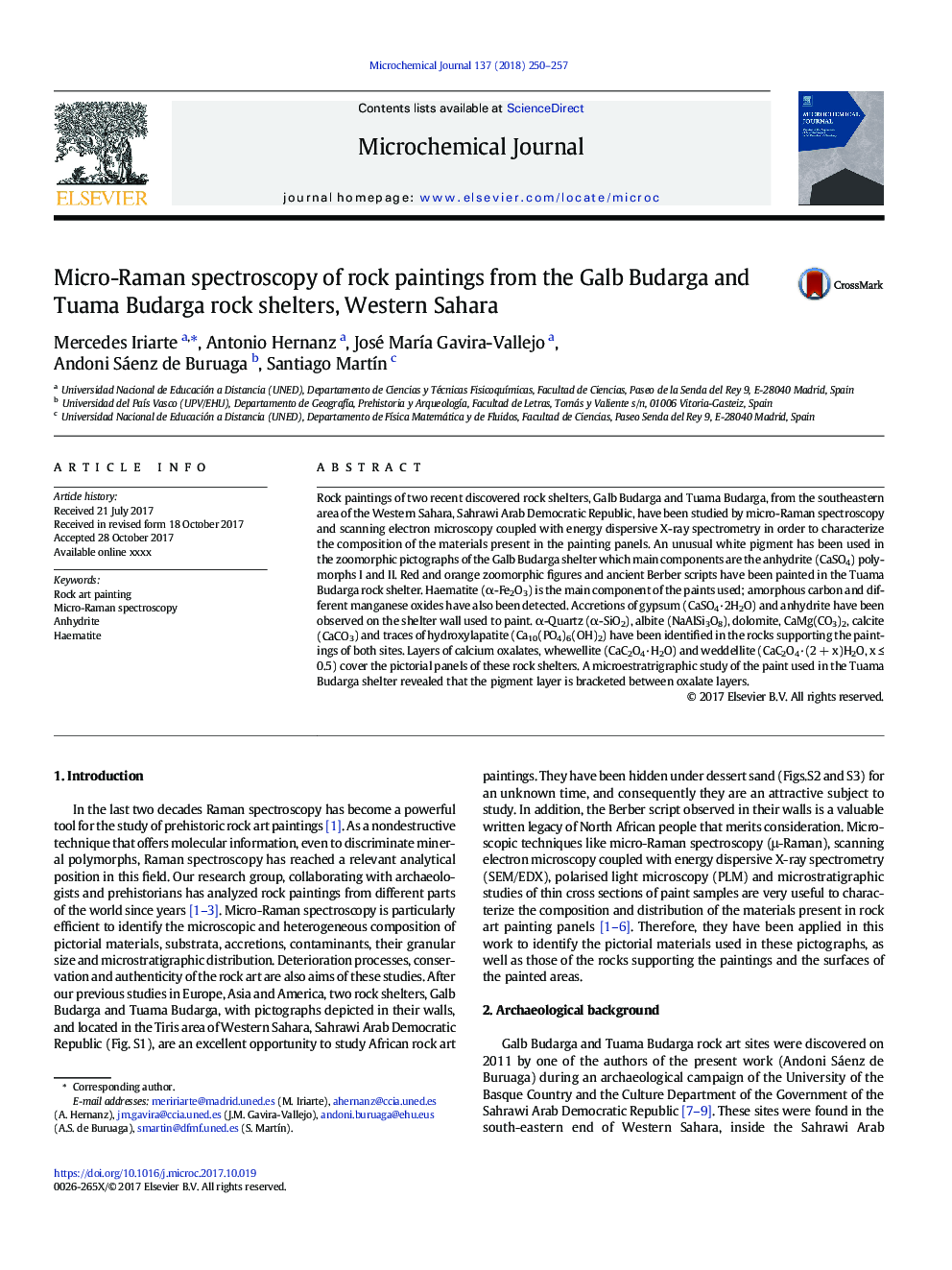| Article ID | Journal | Published Year | Pages | File Type |
|---|---|---|---|---|
| 7640982 | Microchemical Journal | 2018 | 8 Pages |
Abstract
Rock paintings of two recent discovered rock shelters, Galb Budarga and Tuama Budarga, from the southeastern area of the Western Sahara, Sahrawi Arab Democratic Republic, have been studied by micro-Raman spectroscopy and scanning electron microscopy coupled with energy dispersive X-ray spectrometry in order to characterize the composition of the materials present in the painting panels. An unusual white pigment has been used in the zoomorphic pictographs of the Galb Budarga shelter which main components are the anhydrite (CaSO4) polymorphs I and II. Red and orange zoomorphic figures and ancient Berber scripts have been painted in the Tuama Budarga rock shelter. Haematite (α-Fe2O3) is the main component of the paints used; amorphous carbon and different manganese oxides have also been detected. Accretions of gypsum (CaSO4·2H2O) and anhydrite have been observed on the shelter wall used to paint. α-Quartz (α-SiO2), albite (NaAlSi3O8), dolomite, CaMg(CO3)2, calcite (CaCO3) and traces of hydroxylapatite (Ca10(PO4)6(OH)2) have been identified in the rocks supporting the paintings of both sites. Layers of calcium oxalates, whewellite (CaC2O4·H2O) and weddellite (CaC2O4·(2 + x)H2O, x â¤Â 0.5) cover the pictorial panels of these rock shelters. A microestratrigraphic study of the paint used in the Tuama Budarga shelter revealed that the pigment layer is bracketed between oxalate layers.
Related Topics
Physical Sciences and Engineering
Chemistry
Analytical Chemistry
Authors
Mercedes Iriarte, Antonio Hernanz, José MarÃa Gavira-Vallejo, Andoni Sáenz de Buruaga, Santiago MartÃn,
